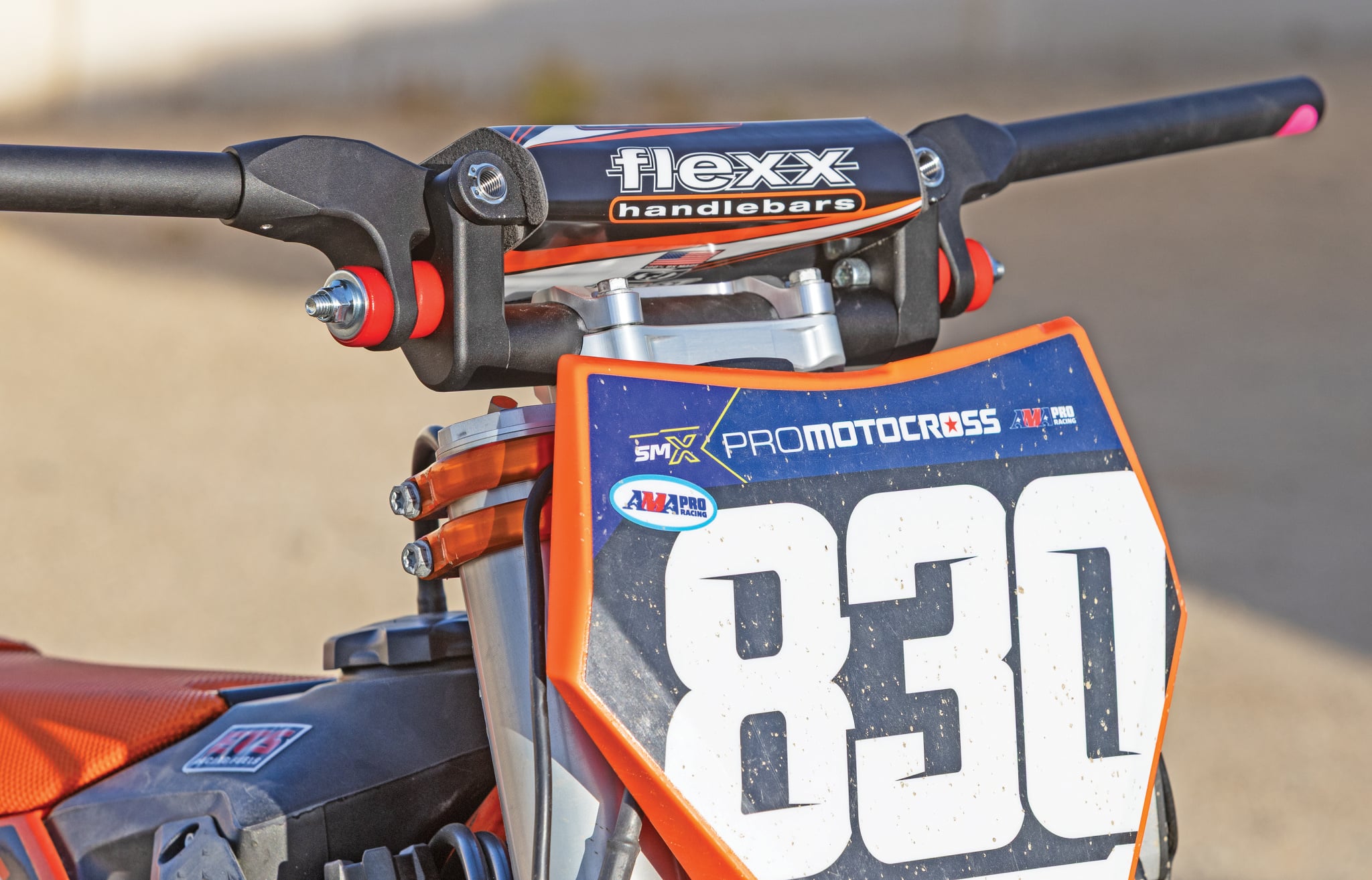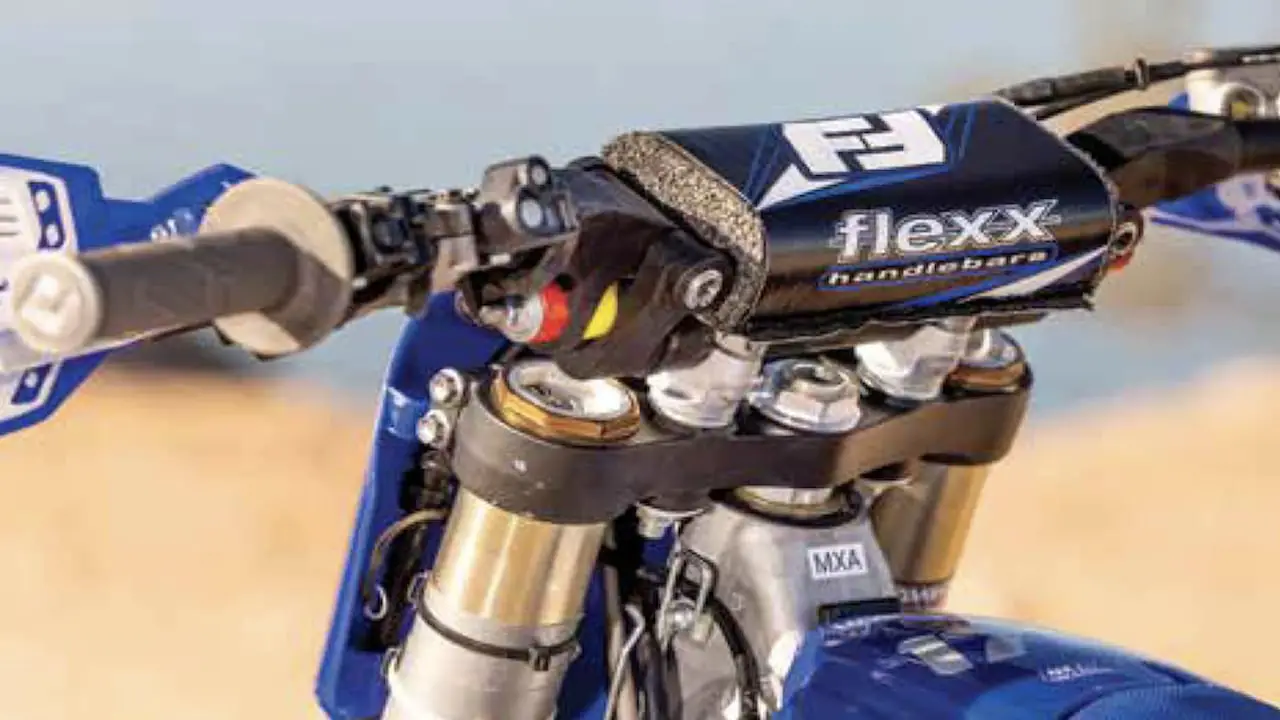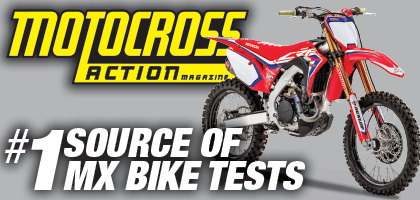TEN THINGS: ABOUT FASST CO.’S FLEXX HANDLEBARS
(1) Concept. Fasst Company Flexx handlebars are not your average set of bars. Think of them as miniature suspension systems for your hands. They’re designed to reduce impacts, vibrations and rider fatigue by flexing in tune with your bike’s suspension, specifically in the vertical plane. That means no sloppy side-to-side movement, which is a common issue with other competitors who try to achieve the same amount of handlebar damping.
(2) Flexx. What separates Flexx bars from other vibration-damping options is their directional movement. They only flex up and down—right in line with the suspension—ensuring that steering precision isn’t compromised. Riders who’ve tested other 360-degree movement systems often complain about floppy bars at higher speeds. For some riders, the floppy movement isn’t an issue, but it’s a foreign, vague feeling for many. The Flexx bars avoid that completely, giving you the same steering confidence you’d expect from a traditional setup.

(3) Tunability. Just like suspension components, the Flexx handlebars are fully tunable. They come equipped with 3/4-inch compression elastomers (available in soft, medium and stiff options) and 1/2-inch rebound elastomers (medium and hard). Want a stiffer ride? Thread the nut in. Want more compliance? Thread it out. You can adjust from the second to the fifth thread (three is standard). This adjustability gives you personalized comfort based on riding style, terrain and physical preference.
(4) Track-tested. Flexx bars are popular in the off-road world but aren’t as popular in motocross. When our test riders first raced with these bars at Glen Helen and Fox Raceway, the results were surprising. On a rough track, the yellow (medium) compression and red (hard) rebound elastomers provided a noticeable reduction in arm fatigue without interfering with front-end feel. Even on jump-heavy tracks, test riders expected unwanted bar flex, but it wasn’t an issue. The takeaway? These bars aren’t just for trail guys; they can hang with the demands of motocross too.
(5) Suspension-like comfort. One of the standout comments from testers was that the Flexx bars made it feel like the front forks were tuned softer without them actually diving deeper into the stroke. That’s a huge win for riders trying to maintain aggressive setups without punishing their bodies. Less jarring feedback through the bars equates to more energy late in the motos.
(6) Durability. Flexx Handlebars are made out 7050 and 7075 aerospace aluminum with titanium pivot pins. Today, most traditional bars are made out of either a 6000 or 2000 series aluminum. Additionally Flexx Handlebars come with a 50 percent off damage warranty in the rare case that you damage a bar. Flexx bars are proven to last decades with riders moving them from bike to bike.
(7) Maintenance. Fasst Company recommends checking the handlebars regularly, especially after crashes. Inspect the pivot area, center section, crossbars, retaining clips, elastomers and lock nuts. Also, if you’re strapping your bike down, loop the tie-downs through the center section to avoid stressing the pivot areas.
(8) Elastomer wear. While the bars themselves are extremely durable, the elastomers do wear out over time, especially if you’re a hard charger or racing frequently. The good news is you can replace them easily with a fresh elastomer kit priced at $29.99. Think of it like replacing fork seals or bushings—part of regular upkeep.
(9) Price tag. Fasst Company’s Flexx handlebars are not for the budget-conscious. At $429.99, they’re more than four times the price of traditional handlebars. However, Fasst Co.’s raw material cost is more than the retail cost of most of the traditional imported bars, and they’re designed and manufactured in the USA by employees who ride and race themselves.
(10) Overall. If you’re willing to pay the premium price, then the comfort, adjustability and performance of Flexx bars deliver real benefits. They’re especially helpful for riders who deal with chronic wrist pain, ride rough tracks or just want to last longer in the saddle. The price might sting, but for many riders, the long-term comfort outweighs the upfront cost.








Comments are closed.